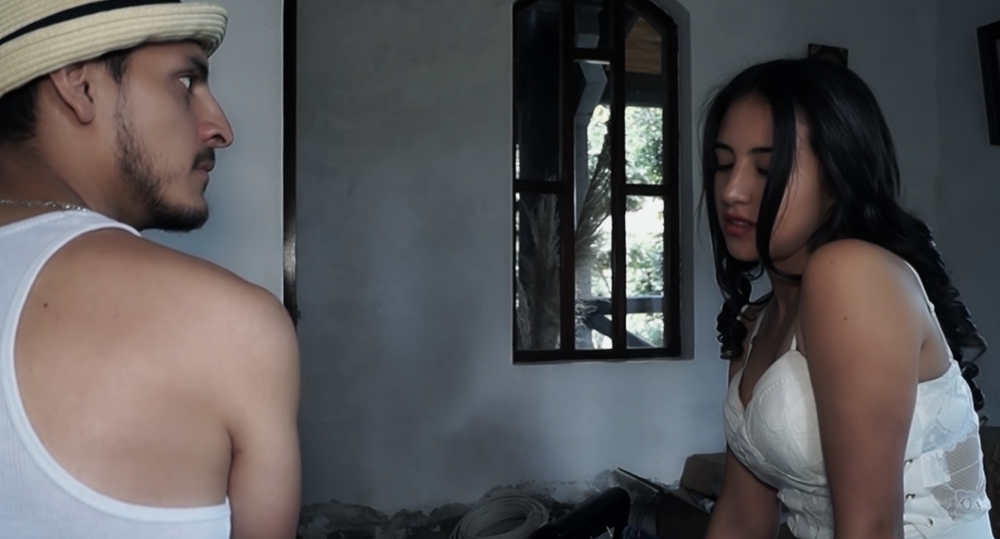Las Antropófagas (2019) – Film Review
 Las Antropófagas is a horror film from Ecuador. It’s filmed in Spanish, but viewers who watch it on streaming sites, such as Tubi or Amazon Prime Video, have the option to turn on English subtitles.
Las Antropófagas is a horror film from Ecuador. It’s filmed in Spanish, but viewers who watch it on streaming sites, such as Tubi or Amazon Prime Video, have the option to turn on English subtitles.
“Las Antropófagas” is Spanish for “The Cannibals”. Once you know that, you should have a good idea what to expect. It’s not a particularly gory film and the special effects are quite poor, so don’t expect to see any sawing off of body parts or fountains of blood. When anything nasty is about to happen, the camera cuts away. However, some viewers may find the scenes that show the cannibals eating are difficult to watch. I certainly did, and found the sound of crunching bones particularly distasteful.
The film is set in a small village with a tight-knit community, that’s thrown into turmoil after after the local priest, Padre Vilverio (Luis Baca) is murdered. His body is found at the side of the road, and bits of him have been eaten. Although many people initially believe the padre’s body may have fallen victim to wild animals or demonic forces, it isn’t long before it becomes clear the teeth marks are human.
The trouble begins around the same time as local police detective Nestor (Luis Torres) brings his fiance, Fatima (Sheyla Carrasco) to the village and throws a big party to introduce the community to his new wife-to-be. A young man arrives in the village shortly afterward. His name is Ramón (David Paspuel) and he’s come to the area to manage a farm belonging to the local police commissario, Aurelio (Edison Rodríguez), who finds him a room at the local guesthouse, where the proprietor’s daughter Clemencia (Estéfania Quezada) shows an instant interest in the new man in town. However, Ramón has just been introduced to Fatima and, despite Clemencia’s obvious charms, appears to have become infatuated with her.
Although the Padre’s death delays the wedding, it’s only a minor spanner in the works. Nestor and his your bride are still wed quite quickly. However, Nestor soon becomes concerned over Fatima’s nightly visits to local doctor, Eva (Gaby León), who she appears to have known before her arrival in the village. Due to the murder of the padre and other members of the community, Nestor tells Fatima her nightly excursions are too dangerous and forbids them, but Fatima waits until he is asleep and leaves the house anyway, generally meeting up with Ramón en route, who is always happy to escort her safely to her friend’s house, much to the annoyance of Clemencia, who becomes so jealous, she goes running to Nestor to tell him what’s happening.

It would be hard to call Las Antropófagas an exciting film. It’s very slow-moving and lacking in surprises. It’s okay though, and the quality of the acting is reasonable, with the characters of Fatima, Clemencia, and Nestor standing out as the most interesting and also coming across as the most convincing, though Torres could be accused of over-acting at times, especially during one scene, where Nestor bears his soul to Aurelio and his portrayal of grief comes over as staged and over-the-top.
Several complex relationships, such as that of Clemencia and her mother, provide reasonably diverting subplots, but many aspects of the storyline would have benefited from further exploration. For instance, when Clemencia reveals the identity of her biological father, it’s certainly surprising but adds no notable value to film. It’ an “Okay-Wow!” moment that doesn’t go anywhere and would have been more interesting if it had been preceeded by some mystery and subtle hints.

Ramón is a particularly disappointing character. After his introduction, he’s never shown at work or doing anything interesting, and, apart from a few conversations with Clemencia, appears to spend his time smoking and hanging around outside the guesthouse waiting for Fatima to walk by—jeesh, hombre! Get a life!
Even though Las Antropófagas has plenty of flaws, it’s not by any means unbearable to watch—scenes of cannibals eating, excepted—but most viewers are unlikely to consider it a film worth watching again. The plots too thin to justify a second viewing and, due to the film’s lack of action, attempting to sit through it more than once would offer all the excitement of watching paint dry.
